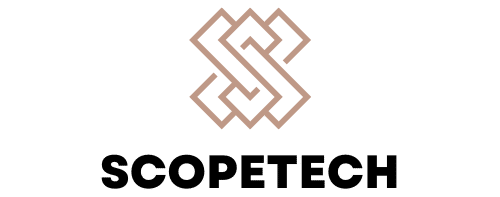What Are the Advancements in Transparent Solar Panels for Building Integration?

Solar energy is becoming an increasingly vital part of the global renewable power mix. I’m sure most of you are familiar with the traditional photovoltaic cells that dominate the solar power market. However, a new type of solar technology is making waves in the energy scene, transparent solar panels. These panels have the potential to revolutionize the way buildings generate and consume electricity. The integration of transparent solar panels into building infrastructure is a sustainable and efficient method of harvesting solar power. So, let’s dive into the most recent advancements and understand their implications for the future of solar energy.
The Concept of Transparent Solar Panels
Before we delve into their advancements, it would be beneficial to understand what transparent solar panels are and how they differ from traditional solar cells.
A lire également : Comparative analysis of major brand chatbots
Unlike traditional solar panels, which absorb visible light to generate electricity, transparent solar panels operate differently. They are designed to absorb ultraviolet and infrared light, allowing visible light to pass through and thus achieving transparency. It’s like having a window and a power generator all in one.
Transparent solar panels are made up of organic materials including solar cells such as transparent luminescent solar concentrators (TLSC) and dye-sensitized solar cells (DSSC). Depending on their transparency level, these panels can be integrated into windows, skylights, and facades of buildings, merging seamlessly with the building’s architecture.
Sujet a lire : What’s the Future of Multi-Modal Biometric Authentication Systems for Security?
Efficiency of Transparent Solar Panels
The efficiency of any solar technology is an essential factor in determining its practicality and market potential. Since transparent solar panels are a relatively new technology, their efficiencies are lower compared to conventional solar panels. However, recent advancements have seen a significant boost in their efficiency.
Researchers have managed to increase the efficiency of transparent solar panels by fine-tuning the materials used in their construction. By optimizing the bandgap, which is the energy difference between the valence and conduction band of semiconductors, researchers have been able to improve the efficiency of transparent solar panels.
Currently, the efficiency of transparent solar panels ranges between 5 to 10 percent, which is a significant improvement from the initial 1 percent. However, experts predict that with further advancements, these panels could achieve efficiencies of up to 20 percent, making them a competitive player in the solar market.
Applications in Building Integration
The integration of transparent solar panels into buildings has the potential to redefine the concept of sustainable architecture. Imagine a world where every window and glass surface in urban structures is a source of renewable energy. That’s the vision behind Building Integrated Photovoltaics (BIPV).
BIPV systems can turn buildings into self-sufficient energy units, reducing reliance on the grid and promoting sustainability. By replacing traditional building materials like windows and cladding with transparent solar panels, we can harness solar energy without compromising the aesthetics or functionality of the building.
The market potential for BIPV is vast. The global BIPV market volume was estimated to be worth USD 16.3 billion in 2021 and is expected to reach USD 32.5 billion by 2028. With more research and development, we can expect wider adoption of transparent solar panels in buildings across the globe.
Challenges and Future Prospects
As with any emerging technology, transparent solar panels face a series of challenges. The main issue stems from their relatively low efficiency compared to traditional panels. Moreover, the cost of producing these panels remains high, which could pose a barrier to their widespread adoption.
However, the potential of transparent solar panels is enormous. Their ability to integrate seamlessly into building designs offers an exciting prospect for creating sustainable, energy-efficient buildings. Researchers continue to explore new materials and designs to improve the efficiency and affordability of these panels.
Innovation in this field is fast-paced, with researchers around the world striving to break new ground. For example, recently, a team from the University of Michigan developed a completely transparent solar cell that could turn any sheet of glass into a photovoltaic panel. This type of innovation is a clear indication that the future of solar energy lies in transparency.
Shaping the Future of Energy
Transparent solar panels are not just a game-changer for the solar energy industry. They represent a shift in how we perceive the spaces we live and work in. The integration of these panels into building designs will make renewable energy an inseparable part of our daily lives.
In our rapidly urbanizing world, the need for sustainable building solutions is more urgent than ever. By harnessing the power of the sun through our windows, we can turn every building into a hub of renewable energy generation. This technology is still in its early stages, but its potential is enormous. As research continues and advancements are made, transparent solar panels will undoubtedly play a significant role in our transition towards a sustainable energy future.
Advancements in Transparent Solar Panel Technology
The advancements in transparent solar panel technology have been quite remarkable. In the early stages, the efficiency of these panels was a mere 1 percent. However, with continuous research and experimentation, we now have transparent solar panels with an efficiency ranging between 5 to 10 percent.
This improvement has been achieved mainly by manipulating the bandgap of the semiconductors used in the construction of these panels. The bandgap refers to the energy difference between the valence and conduction band of semiconductors. By optimizing the bandgap, scientists have managed to boost the efficiency of these panels.
Furthermore, researchers at the University of Michigan developed a completely transparent solar cell, which has immense potential to revolutionize solar power generation. This innovative technology can transform any sheet of glass into a photovoltaic panel, thereby expanding the use of solar energy beyond conventional solar panels.
Moreover, advancements in cell type technology are making transparent solar panels more affordable and accessible. These improvements, combined with the growing concern over climate change and increasing demand for sustainable energy sources, are driving the growth of this market globally, especially in North America.
To cope with the increasing demand, researchers are working extensively on finding new ways to enhance the efficiency and durability of these panels further. The next frontier in transparent solar technology will likely involve the integration of energy storage solutions, which would allow buildings to store the energy they generate during the day for use during the night or overcast days.
Conclusion: The Promise of Transparent Solar Panels
Transparent solar panels hold enormous potential for transforming our urban landscapes into centers of renewable energy generation. These panels, with their ability to integrate seamlessly into building designs, not only make buildings more energy-efficient but also redefine our perception of renewable energy.
Despite the challenges that lie ahead, the advancements in transparent solar panel technology are irrefutable. With the ongoing research and development, the efficiency of these panels is likely to increase, and their cost is expected to decrease, making them a viable and practical solution for energy generation in the near future.
The integration of transparent solar panels into buildings, or Building Integrated Photovoltaics (BIPV), has the potential to turn every glass surface into a source of renewable energy. As we continue to urbanize, the need for such sustainable solutions is only going to increase.
In conclusion, while we are still in the early stages of this technology, the progress made so far is promising. Whether it is in terms of efficiency, aesthetics, or sustainability, transparent solar panels are indeed shaping the future of energy. With further advancements, we can expect to see these panels integrated into more and more buildings, making renewable energy an inseparable part of our lives.
